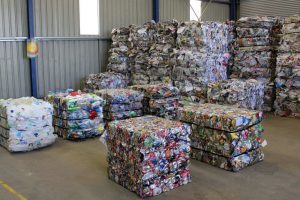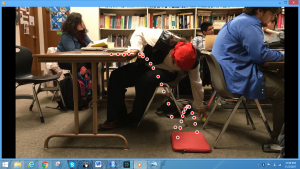High School: Geometry I
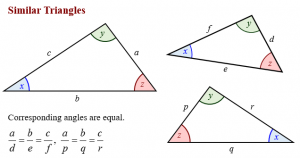
Proving Geometric Theorems
By Emily Ivie
This learning progression was designed primarily for students who are in a traditional classroom
setting and have similar mathematical abilities. This class consists of 28 students, mainly
sophomores, who are studying geometry as part of their graduation requirement. The geometry
class has been designed to cover topics at a pace that meets the state requirements of content
topics in high school geometry. Since the class is set up on a semester system, the majority of the
students in this class have been a part of this class since the start of the school year and have had
the same exposure and background knowledge about geometry. Many students enjoy talking and
taking part in discussions during class, that is why I am going to teach this learning progression
in a student-lead conversation.
Standards:
The Common Core State Standards that will be satisfied are from the High School Geometry:
Congruence: Prove Geometric Theorems cluster. In the Congruence domain we will cover
CCSS.MATH.CONTENT.HSG.CO.C.9. Prove theorems about lines and angles and we will also
prove theorems about triangles and parallelograms with standards
CCSS.MATH.CONTENT.HSG.CO.C.10 and CCSS.MATH.CONTENT.HSG.CO.C.11. In this
course, students focus on mastering basic geometry knowledge that is required by the state, while
integrating in common core standards and mathematical practices. In this learning progression
the students will use four mathematical practices including: MP4, MP5, and MP7.
The curriculum these students are learning is based off the McDougal Littell: Geometry by
Larson, Boswell, and Stiff. This textbook is a resource used to design lectures, find worksheets,
and create practice problems through. The start to each class day will begin with a warm up
problem, followed with an introduction to a new topic with notes, classroom activity, and then
discussion. The notes are put up on the projector at the beginning of class so that students who
finish their warm up activity early can start writing the notes.
Accommodations:
Throughout the learning progression accommodations are made for students with IEPs and ELL
students. For the students who need a longer amount of time to write down their notes, they are
able to get the notes from me a day early so that they do not fall behind during lecture and are
able to participate in the discussion during note. Another accommodation made is that I let my 2
ELL students sit next to each other because they feel most comfortable working in partners this
way. In addition to these accommodations, the learning progression designed has activities that
are accessible to all learners. They do not require internet or any other tools beside from the
classroom whiteboards, pen, and paper.
Central Focus:
The central focus of this learning progression is for students to understand how specific theorems
about lines, triangles, and parallelograms were proved and how you can apply them. Students
will also have an understanding as to why it is important to know these theorems when applying
them to everyday life situations.
Lesson 1: Lines
We will start with an introduction to lines: parallel, transversal, and perpendicular. Since many of
the students have already had an introduction to this topic, it will be much easier to engage in a
class in student lead discussion when I ask them, “What does it mean for two lines to be parallel/
transversal/perpendicular?” This discussion of defining certain types of lines will begin to build
their mathematical thinking and conceptual understanding that they will use again during their
partner tasks. During the entry task students will demonstrate MP 7 looking for a way to identify
structure. After reviewing the entry task and understanding these definitions, I will give students
different geometric pictures and we will play a game of “I Spy”, students will be given colored
pencils and required to make a key. We will go around the class and identify specific types of
lines and angles. Once each student has identified and color marked one type of each line and
angle, I will show the students how to prove theorems about line angles. My example I will show
in class will be proving how vertical angle are congruent. I will ask students specific questions to
guide their learning such as: “What do we know about the lines and angles in this diagram? Are
their any linear pairs? What about supplementary?” These questions will formatively assess my
students knowledge about how well they conceptually understand how to identify lines and
angles. When students answer these questions, I will be looking for them to make the connection
between the next steps such as, “since we have angles that are linear pairs, we can use the linear
pair postulate.” This assessment will show students understanding of
CCSS.MATH.CONTENT.HSG.CO.C.9. proving theorems about lines and angles. After students
have worked through the vertical angle theorem, I will ask them to prove that alternate interior
angles are congruent. They will turn in their proof as part of their summative assessment. Once
looking at their proof, I will give feedback based on their reasoning and mathematical thinking.
Lesson 2: Triangles
My next activity will start with reminding my students about the properties of triangle. We will
be expanding our proof knowledge of triangles building off of the prior lesson where students
learned about proving lines and angles and we will try to prove properties about triangles. I will
work through one property about triangles and hold a discussion. After this, we will break up into
groups and I will give each group one theorem about triangles to solve. Then once enough time
has passed, each group will go up to the front board and give a presentation about the theorem
they proved. This lesson aligns with the following standard
CCSS.MATH.CONTENT.HSG.CO.C.10 proving theorems about triangles. Finally once groups
have put their proof up on the whiteboard, I will ask questions to assess their understanding such
as “What does this theorem tell us?”, “How can we apply this postulate to our problem?”, and
“Where do you start when proving this theorem?” These questions are important to ask students
to make sure that they are using tools (such as theorems) appropriately MP5. These
presentations will be a formative and summative assessment to make sure that students can
properly use the new information we just learned as well as explain their answers using old
vocabulary.
Lesson 3: Parallelograms
We will be expanding students understanding of proving line angles and triangles by introducing
parallelogram theorems. Ideally this lesson should be a fun activity that helps students with their
understanding of parallelogram proofs. Students will begin the lesson with a warm up in which
we will cover material learned in the previous day. Students will find a partner and share their
proof completed from the homework the night before. After we finish the entry task I plan to go
over the learning outcomes for the day, which is, students will be able to use their learned
understanding of parallelogram proofs. Shortly after that we will have a class discussion about
what a parallelogram is and I will encourage the use of specific vocabulary words like length,
adjacent, and angle. During our discussion I will hand out 4 parallelogram figures made from
construction paper to each student. We will go through each theorem about parallelograms:
labeling, folding, and drawing on each figure to show understanding for each theorem. Then I
will have the students take the time to try about write up their proofs of these theorems. While
the students working on folding there diagrams I will be walking around the classroom asking
questions about the theorems and how they proved the theorem. During this activity students will
achieve their learning target of CCSS.MATH.CONTENT.HSG.CO.C.11 and MP 4: “Model with
Mathematics” because students will use their parallelogram cuts outs to model their proofs.
 ors in high school who are currently taking a college course that is taught at their high school, Math 102: Mathematical Decision Making. The Common Core State Standards (CCSS) that will be addressed come from one domain, High School: Statistics and Probability. The CCSS clusters that will be addressed are “Make inferences and justify conclusion from sample surveys, experiments, and observational studies” and “Use probability to evaluate outcomes of decisions.” Students will also meet Mathematical Practices 3, 5, and 7.
ors in high school who are currently taking a college course that is taught at their high school, Math 102: Mathematical Decision Making. The Common Core State Standards (CCSS) that will be addressed come from one domain, High School: Statistics and Probability. The CCSS clusters that will be addressed are “Make inferences and justify conclusion from sample surveys, experiments, and observational studies” and “Use probability to evaluate outcomes of decisions.” Students will also meet Mathematical Practices 3, 5, and 7.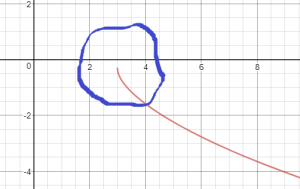

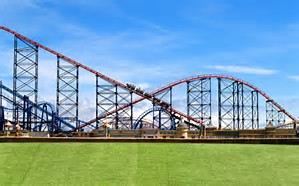 Learning Target – I will be able to use a motion detector to match and then create a time-distance graph. Represent two numerical variables on a scatter plot and describe any correlation and/or relationship between the two variables.
Learning Target – I will be able to use a motion detector to match and then create a time-distance graph. Represent two numerical variables on a scatter plot and describe any correlation and/or relationship between the two variables.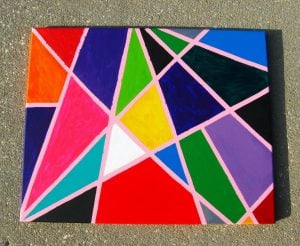
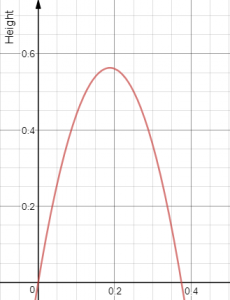
 These three pictures show three steps of the recycling process of plastic containers. This process begins with many different containers being stored together because they are made out of plastic. Then the containers are loaded into a machine that compresses them together so that when they come out of the machine they hold a uniform shape. I would use this process to help students conceptualize functions. The storage of the many different containers represents a function’s
These three pictures show three steps of the recycling process of plastic containers. This process begins with many different containers being stored together because they are made out of plastic. Then the containers are loaded into a machine that compresses them together so that when they come out of the machine they hold a uniform shape. I would use this process to help students conceptualize functions. The storage of the many different containers represents a function’s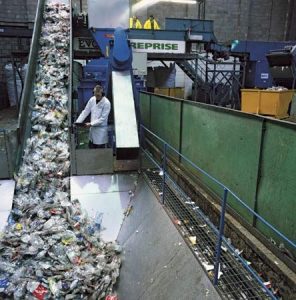 domain, the compacting machine represents the function itself, and the compressed and uniform cubes of plastic containers represent the function’s range and the organization of the ordered pairs that are produced by the domain and range. By including this analogy in your lesson, students will all have at least one real world occurrence that they can use as they reason through the concept of a function.
domain, the compacting machine represents the function itself, and the compressed and uniform cubes of plastic containers represent the function’s range and the organization of the ordered pairs that are produced by the domain and range. By including this analogy in your lesson, students will all have at least one real world occurrence that they can use as they reason through the concept of a function.